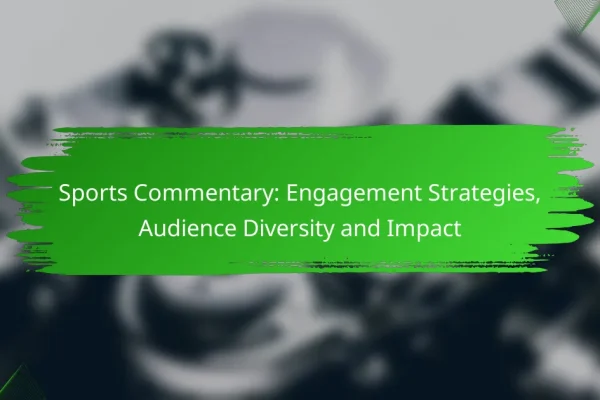What are effective content creation techniques in Australia?
Effective content creation techniques in Australia focus on engaging audiences through storytelling, leveraging data, utilizing visuals, integrating user-generated content, and optimizing for search engines. These methods help creators connect with their target market and enhance visibility in a competitive landscape.
Storytelling for engagement
Storytelling is a powerful technique that captivates audiences by creating relatable narratives. In Australia, incorporating local culture and experiences can make stories resonate more deeply with the audience. For instance, using anecdotes from Australian life can enhance relatability and emotional connection.
When crafting stories, consider the structure: start with a hook, build tension, and conclude with a resolution. This format keeps readers engaged and encourages them to share your content, amplifying its reach.
Data-driven content strategies
Data-driven content strategies involve using analytics to inform content creation and distribution. In Australia, tools like Google Analytics and social media insights can provide valuable information about audience preferences and behaviors. This data helps tailor content to meet the specific needs of your target demographic.
To implement a data-driven approach, regularly review performance metrics and adjust your strategy accordingly. Focus on key performance indicators (KPIs) such as engagement rates and conversion metrics to measure success effectively.
Visual content utilization
Visual content is essential for capturing attention and conveying information quickly. In Australia, incorporating images, infographics, and videos can significantly enhance the appeal of your content. Research shows that articles with visuals receive higher engagement rates compared to text-only formats.
When using visuals, ensure they are high-quality and relevant to the content. Consider using Australian landscapes or culturally relevant imagery to create a stronger connection with local audiences.
User-generated content integration
User-generated content (UGC) involves leveraging content created by your audience, such as reviews, testimonials, and social media posts. This technique fosters community and trust, as potential customers often value peer recommendations over branded messages. In Australia, encouraging UGC can enhance your brand’s authenticity.
To effectively integrate UGC, create campaigns that invite users to share their experiences with your brand. Highlighting this content on your platforms can encourage more participation and build a loyal community.
SEO optimization practices
SEO optimization practices are crucial for increasing the visibility of your content in search engines. In Australia, focusing on local SEO can help attract a geographically relevant audience. This includes using location-specific keywords and optimizing for local search results.
To improve SEO, ensure your content is well-structured with appropriate headings, meta descriptions, and alt text for images. Regularly updating content and building backlinks from reputable Australian websites can further enhance your search rankings.
How can I improve my content creation workflow?
Improving your content creation workflow involves streamlining processes and enhancing collaboration. Focus on planning, utilizing tools effectively, and repurposing content to maximize efficiency.
Content calendar implementation
Implementing a content calendar helps organize your publishing schedule and ensures timely delivery of materials. Start by mapping out key dates, themes, and content types for at least a month in advance.
Consider using a digital calendar or a spreadsheet to track deadlines, assign tasks, and visualize your content pipeline. This method reduces last-minute rushes and improves overall consistency.
Collaboration tools like Trello
Collaboration tools such as Trello facilitate team communication and project management. Create boards for different projects, allowing team members to assign tasks, set deadlines, and track progress in real-time.
Utilize features like checklists and labels to prioritize tasks and keep everyone aligned. Regularly review the board to adjust timelines and responsibilities as needed, ensuring a smooth workflow.
Content repurposing strategies
Content repurposing involves taking existing content and adapting it for different formats or platforms. This strategy maximizes the value of your work and reaches diverse audiences.
For example, transform a blog post into a video, infographic, or social media post. Aim to repurpose at least 20-30% of your content to save time and resources while maintaining engagement across various channels.
What criteria should I consider when selecting content creation tools?
When selecting content creation tools, consider ease of use, integration capabilities, and cost-effectiveness. These factors will help ensure that the tools you choose enhance your workflow and meet your specific content needs.
Ease of use
Ease of use is crucial when selecting content creation tools, as it directly impacts your productivity. Look for tools with intuitive interfaces and straightforward navigation to minimize the learning curve. A user-friendly tool can save you time and reduce frustration, allowing you to focus on content quality.
Consider trying out free trials or demos to assess usability before committing. Tools that offer extensive documentation or customer support can also be beneficial if you encounter challenges.
Integration capabilities
Integration capabilities refer to how well a content creation tool connects with other software you use. Tools that seamlessly integrate with platforms like social media, analytics, or project management software can streamline your workflow and enhance collaboration. Look for tools that support popular integrations to maximize efficiency.
Check if the tool offers APIs or plugins that allow for customization and additional functionality. This can be particularly important for teams that rely on multiple tools to manage their content strategy.
Cost-effectiveness
Cost-effectiveness is an important criterion when selecting content creation tools, as you want to ensure you get value for your investment. Compare pricing plans and features to find a tool that fits your budget while meeting your needs. Some tools offer tiered pricing based on features, so consider what you truly require.
Keep an eye out for hidden costs, such as additional fees for premium features or support. Free or low-cost tools can be effective, but ensure they provide the necessary functionality to avoid costly upgrades later on.
What are the benefits of using AI in content creation?
AI in content creation offers numerous advantages, including increased efficiency, enhanced personalization, and improved optimization. These benefits enable creators to produce high-quality content faster and tailor it to specific audience needs.
Enhanced productivity
AI tools can significantly boost productivity by automating repetitive tasks, such as research, drafting, and editing. This allows content creators to focus on more strategic aspects of their work, such as ideation and audience engagement.
For example, AI can generate outlines or even full drafts in a matter of minutes, reducing the time spent on initial content creation. This efficiency can lead to the production of more content in less time, which is crucial in today’s fast-paced digital landscape.
Personalization opportunities
AI enables content creators to personalize their output based on audience data and preferences. By analyzing user behavior and demographics, AI can suggest tailored content that resonates with specific segments of the audience.
For instance, AI can help in creating customized email campaigns or social media posts that address the unique interests of different user groups. This level of personalization can enhance engagement and improve conversion rates significantly.
Content optimization
AI tools can analyze existing content to identify areas for improvement, such as SEO optimization, readability, and engagement metrics. This analysis helps creators refine their content to better meet audience expectations and search engine standards.
Using AI for optimization can involve keyword analysis, sentiment analysis, and performance tracking. By implementing these insights, creators can enhance their content’s visibility and effectiveness, ultimately driving more traffic and engagement.
How can I measure the success of my content?
Measuring the success of your content involves analyzing various metrics that reflect its performance and impact. Key areas to focus on include engagement metrics, conversion tracking, and SEO performance indicators.
Engagement metrics analysis
Engagement metrics provide insights into how users interact with your content. Common metrics include page views, time spent on page, bounce rate, and social shares. High engagement typically indicates that your content resonates with your audience.
To analyze engagement effectively, use tools like Google Analytics to track these metrics over time. Look for trends, such as increasing time on page or a decreasing bounce rate, as indicators of improving content quality.
Conversion tracking
Conversion tracking measures how well your content drives desired actions, such as sign-ups, purchases, or downloads. Setting up conversion goals in analytics tools allows you to see which pieces of content lead to these actions.
Consider using UTM parameters to track the performance of specific content pieces across different platforms. This can help you identify which channels are most effective for driving conversions.
SEO performance indicators
SEO performance indicators help assess how well your content ranks in search engines and attracts organic traffic. Key metrics include keyword rankings, organic traffic volume, and click-through rates (CTR) from search results.
Utilize tools like Google Search Console to monitor these indicators. Focus on optimizing your content for relevant keywords and improving meta descriptions to enhance CTR, which can lead to higher visibility and traffic over time.
What are emerging trends in content creation?
Emerging trends in content creation include the rise of interactive content, the use of artificial intelligence, and a focus on personalization. These trends are shaping how creators engage with audiences and deliver value through their content.
Interactive Content
Interactive content, such as quizzes, polls, and infographics, enhances user engagement by allowing audiences to participate actively. This type of content can lead to higher retention rates and increased sharing, making it a valuable tool for marketers.
To create effective interactive content, consider user preferences and the context in which they consume information. For instance, a quiz related to a trending topic can attract attention and encourage social sharing.
Artificial Intelligence in Content Creation
Artificial intelligence (AI) is transforming content creation by automating tasks like writing, editing, and even generating ideas. Tools powered by AI can analyze data to suggest topics that resonate with specific audiences, streamlining the content development process.
While AI can enhance efficiency, it is essential to maintain a human touch in content. Relying solely on AI-generated content may lead to a lack of authenticity, so balance is key.
Personalization
Personalization involves tailoring content to meet the specific interests and needs of individual users. This trend is driven by data analytics, which helps creators understand audience behavior and preferences.
To implement personalization effectively, utilize user data to segment your audience and deliver targeted content. For example, email campaigns that offer personalized recommendations can significantly improve engagement rates.











